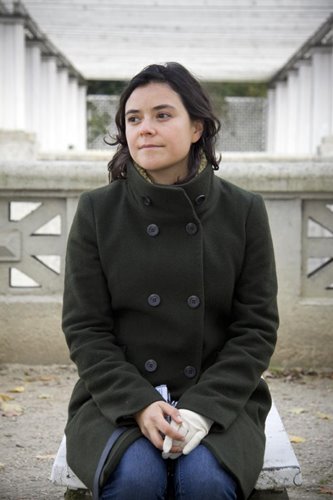After learning so much about famous graphic artists, it is time to begin exploring a new genre of art. With Cinco de Mayo coming up this month, we decided to focus our exploration on Latin American photographers. Our journey of exploration begins in Mexico, with Eunice Adorno.
Eunice Adorno was born in Mexico City, in 1982. She got her degree in photography from the Morelense Center for the Arts in Cuernavaca. She started her work as a photojournalist and free-lance photographer. Adorno has collaborated with many different international publications, including the British Journal Photography, National Geographic Travel, Marie Claire, and Time Magazine’s Lightbox. Adorno has had work on display in group exhibitions all over the world, including the United States, the Czech Republic, Brazil, Italy, and Germany.
Adorno’s experience with journalism fueled her interest that led to long-term documentary projects. She has a desire to examine communities in Mexico that are sometimes unnoticed and misunderstood. These groups are often missing memories of the past and she digs through history to tell their stories through journalism and photographs.
Las Mujeres Flores (translated to Flower Women), is her most recognized piece of work. This was a two year project that focused on women in the Mennonite communities in Zacatecas, Mexico. This community spoke German and Adorno speaks English and Spanish. She had to get to know the women through life observation and old photographs. This project was published as a book and won the Fernando Benitez National Prize for Culture in 2010.
Other projects include “There is No Such Place” and “The Dance From the North to the South”. “There is No Such Place”, examines violent Mexican cities and how people fight for their own experiences and their own identities in a place “where apparently you can no longer walk and where apparently you can no longer trust others.” “The Dance from the North to the South” comes from Adorno’s “personal fascination of portraying the dances called “group dances” that take place on the outskirts of the Federal District and neighboring states such as the State of Mexico and Morelos.”
As each generation passes away, they take with them the stories and the memories that explain our history. It is so important to use those resources while we still have them. Photography helps capture the stories that explain where we came from, and who we are. Eunice Adorno takes the time to ask the questions, and captures, with her camera, what we all are looking for – a deeper understanding of the human race.
If you’re interested in downloading the FREE worksheet that goes along with this article, click the button below and enter your email!





